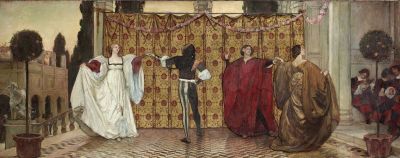ORCHESTRA
Gabriel Faure's Pavane as the key to modern revival of early genre

A Pavane by Edwin Austin Abbey
The pavane—a slow processional dance of Italian origin—was quite common in Europe during the transition period from the Renaissance to Baroque, although pavane-based musical forms existed long after the decline of the dance itself. It was an exclusively aristocratic dance performed simultaneously by one or two couples, and court balls were usually opened by the royal pair pavane.
Perhaps the decisive role in the modern revival of the genre was played by the French composer Gabriel Fauré, whose late-Romantic era Pavane in F-sharp minor prompted his outstanding compatriots Claude Debussy and Maurice Ravel to compose their own pavanes. The trend was picked up by many classical composers of the 20th century, and over time, pop artists such as Eric Clapton and Jon Lord began to use pavan-inspired themes in songs and instrumental compositions.
Although compositionally Fauré's Pavane corresponds to the genre canons, its smooth melodic choices go back to folk songs expressing the tendencies of the time when the creative search of many artists took them to traditional European folklore. It is noteworthy that the orchestral version contains a choral part meant for the verses of the symbolist poet Robert de Montesquiou, consisting of fragmentary phrases and exclamations whose sound came close to imitating the "light-hearted chaffing" between the dancers.
Listen to Fauré's Pavane performed by Neville Marriner with Academy of St. Martin in the Fields:
The melody of Fauré's Pavane is well known around the globe for its frequent use in films, advertising, and sporting events like the 1998 FIFA World Cup which the BBC covered using the Pavane. The piece is constantly sampled by pop artists, vocally improvised by jazz musicians, while its impressive guitar variations are featured in rock arrangements by Jethro Tull, Joe Satriani, and Iron Maiden.



